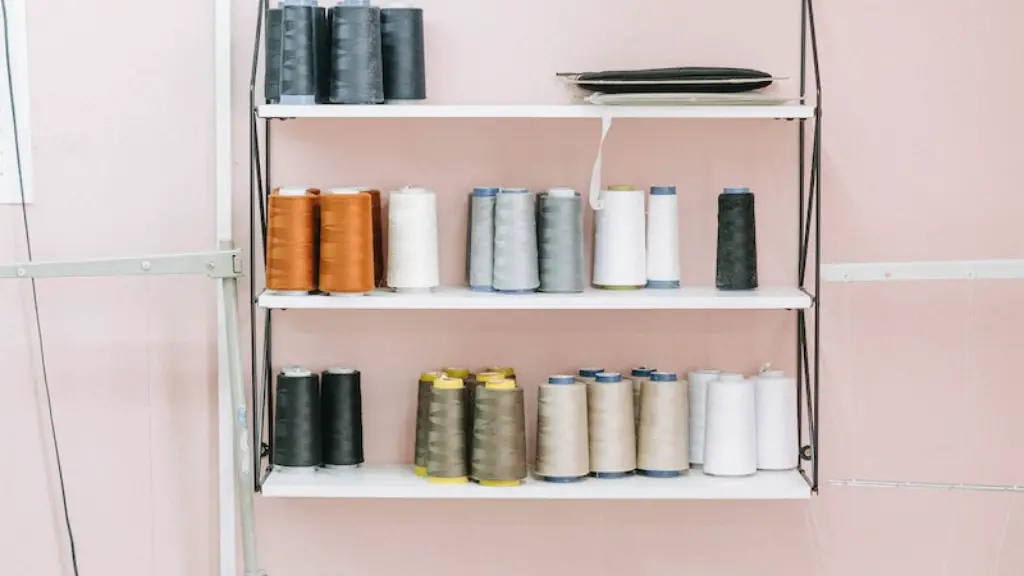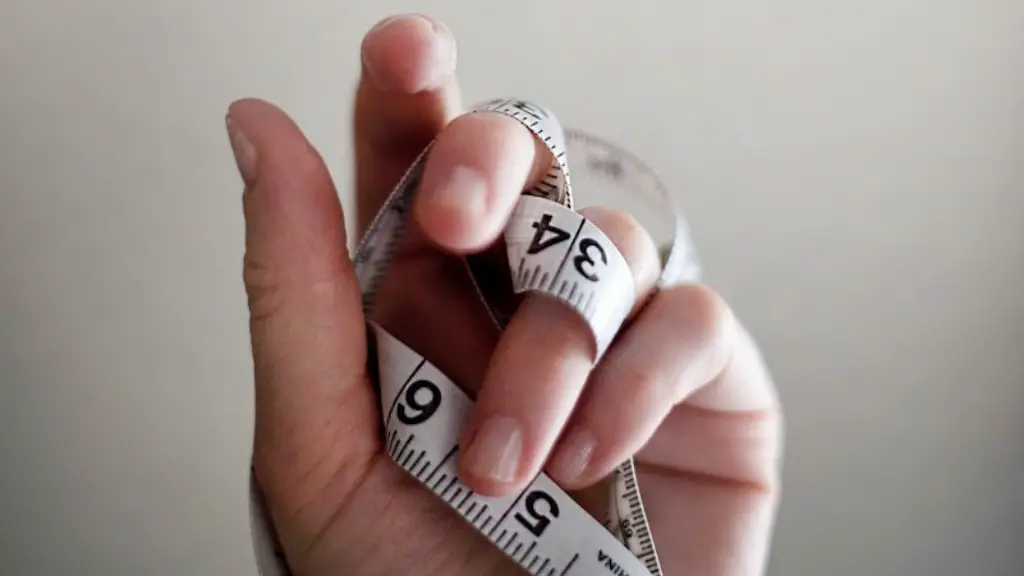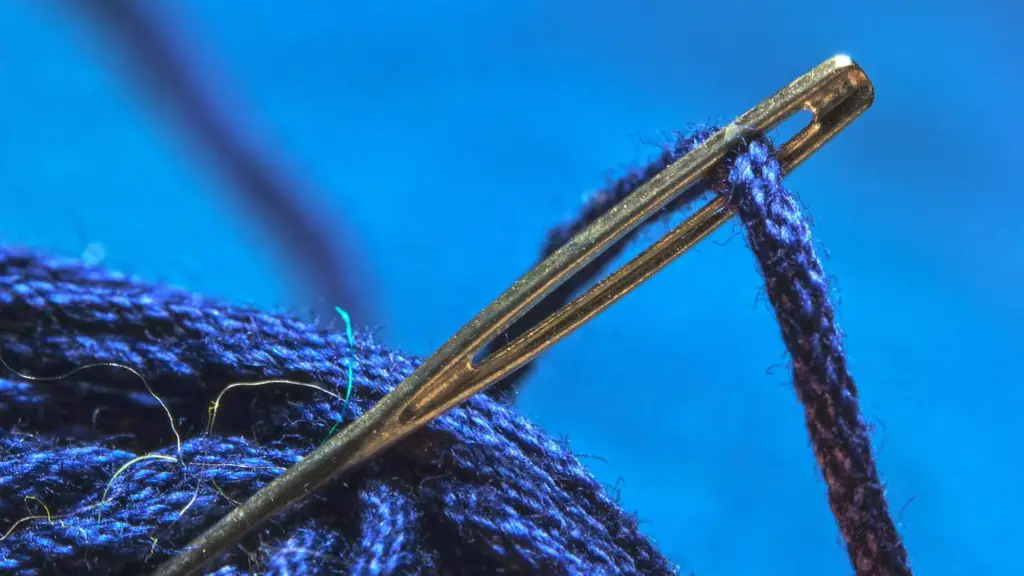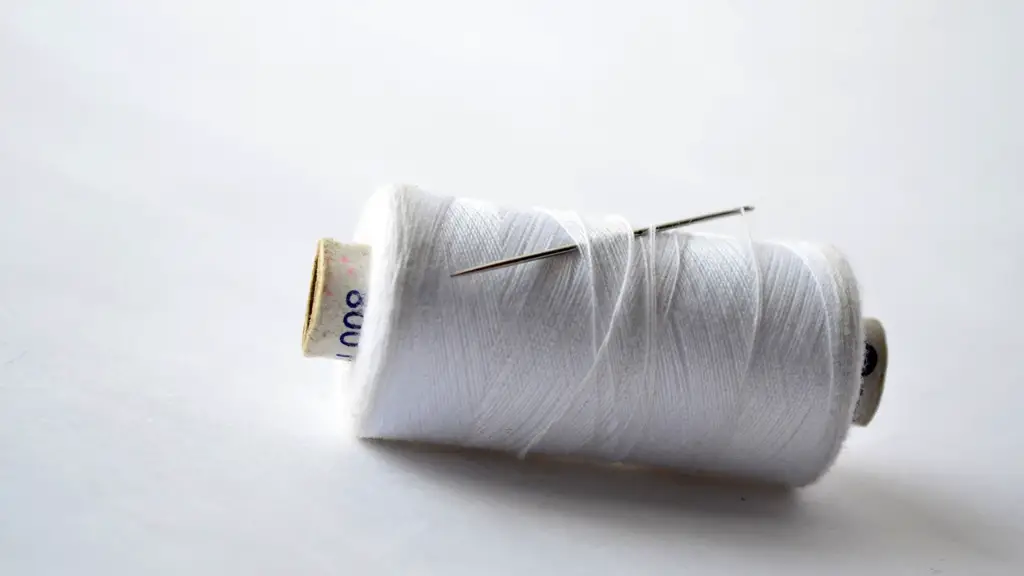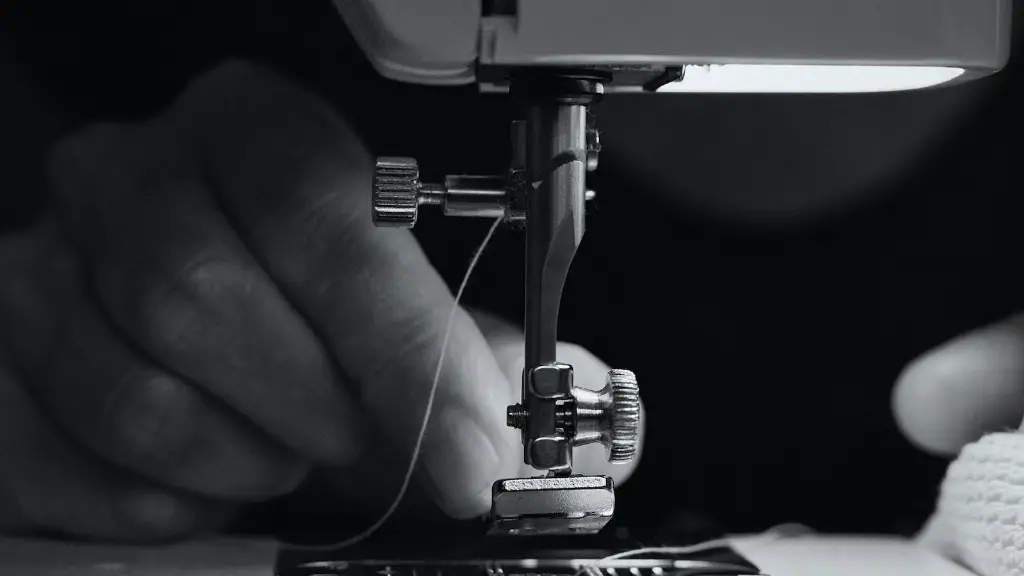When it comes to industrial sewing machines, the topic of weight is one often discussed. It’s important for operators to know just how heavy the machine they’ll be working with is, as it will play a huge role in their safety, productivity, and overall satisfaction in the workplace. Industrial sewing machines have been around for decades, and many have been designed specifically for their weight, so it’s not always easy to put a number on it.
Generally speaking, an industrial sewing machine can range anywhere from 75 to 450 pounds, depending on the make and model. But that’s the range you can expect when working with an average machine. There are larger industrial machines that can weigh up to 800 pounds, which is where the numbers start to get bigger. Some machines can even weigh more than that, but those are usually custom machines used for very specific tasks like upholstery and industrial canvas-working.
One factor that affects weight is the size of the machine. Larger machines will naturally weigh more due to their bulkier size. But that doesn’t always mean the machine is more powerful than its lighter-weight counterpart. It largely comes down to the motor power and the number of stitches per minute the machine can handle. Generally speaking, the more powerful the machine is, the more stitching power it has, and the heavier it will be.
It’s also important to take into account the type of material the machine is going to be working with. Heavier materials such as canvas or leather will require heavier machines in order to handle the pressure. Some machines are built specifically for this type of material and will be much heavier than an average machine. It’s important for operators to account for the weight when working with these types of materials.
In addition to taking the motor power, material, size, and other factors into account, another important factor to consider is the machine’s durability. Heavy-duty industrial machines are usually more durable than lighter ones, as they are designed to last longer and handle more intense conditions. However, they will also naturally weigh more. This is why it’s important to do your research and find a machine that suits the specific needs of your production line.
For operators looking to operate a heavy-duty industrial machine, there are some safety considerations to take into account. It’s important to practice proper body mechanics when operating the machine, as it can be dangerous if not done correctly. Additionally, it’s important to understand the weight capacity of the machine and make sure that you don’t overburden it, as this can lead to serious damage or injury.
In conclusion, the weight of an industrial sewing machine largely depends on a number of factors, such as motor power, the type of material, size, durability, and even the specific make and model of the machine. It’s important for operators to consider all of these factors when buying or using an industrial sewing machine, as it can have a huge impact on safety, productivity, and satisfaction.
Paths to Automation and Robotics
New developments in technology have revolutionized the industrial sewing industry over the past several decades, enabling more accurate and efficient production results. Automation and robotics are being used in many industries and are becoming more accessible when it comes to industrial sewing machines. Automation allows for tasks to be completed without manual labor, enabling operators to save time and money. Robotics, on the other hand, provide a new level of accuracy and precision, allowing for more intricate stitching patterns with less time and effort.
When it comes to industrial sewing, automation and robotics offer a range of benefits, including increased safety, faster production times, and cost savings. Automating the production process means that more sophisticated stitching patterns can be achieved with greater accuracy, as machines can operate with more consistency and repeatability. Automating the stitching process also eliminates manual labor, which can help increase overall efficiency and reduce costs.
Robotics can be used to create intricate stitching patterns and carry out complex tasks that are difficult or impossible for a human operator to achieve. Automation and robotics technologies, when coupled with the power of industrial sewing machines, can produce stunning results with greater accuracy and precision than ever before, creating smooth and beautiful stitching patterns that are simple to replicate with limited effort.
Robotics and automation technologies provide a range of benefits for operators when it comes to industrial sewing machines. They can help reduce production costs, increase accuracy, provide a consistent and repeatable result, and even increase safety. By investing in robotics and automation technologies, operators can ensure that their production process is efficient and cost-effective, making them more competitive in the market.
Contemporary Sewing Machines Enhance Efficiency
Contemporary advancements in industrial sewing machines have provided operators with more efficient and robust machines than ever before. While traditional machines require manual labor, more efficient machines such as lockstitch machines allow operators to produce consistent results with a fraction of the time and effort. Lockstitch machines typically offer the benefit of being able to produce a range of stitching patterns quickly, which can increase the overall productivity and efficiency of the production process.
In addition to lockstitch machines, modern industrial sewing machines also feature a range of high-tech features such as easy-to-use control panels, intuitive software interfaces, and data tracking capabilities. These features enable operators to maximize their productivity and cost savings by monitoring the performance of their machines and tracking the results of their production cycles. Automation and robotics technologies can also be integrated into these machines, allowing for more efficient stitching patterns with minimal effort.
Finally, contemporary industrial sewing machines also offer a range of safety features that provide operators with enhanced protection when working with heavy-duty machines. Sensors, for example, can detect potential safety risks and alert operators if the machine is not being used properly or if it is not functioning correctly. By investing in modern machines, operators can ensure that they are working in a safe and secure environment while getting the most out of their machines.
Key Characteristics of Industrial Sewing Machines
Industrial sewing machines are powerful pieces of equipment designed to meet the needs of specific tasks and requirements. Their ability to handle heavy-duty work and withstand rigorous operational demands is unparalleled. Industrial sewing machines come in all shapes and sizes, but each has its own unique characteristics.
Generally speaking, industrial sewing machines are designed to be more powerful than regular stitching machines, as they are designed to stitch heavier fabrics, create intricate patterns with ease, and withstand repeated usage over longer time periods. The motors of the machines are robust and powerful, enabling them to stitch through thick materials in a swift and efficient manner.
In addition to their powerful motors, industrial machines also feature a range of other features such as adjustable speeds, adjustable stitch lengths, and adjustable feed dogs. These features make the machines more versatile and enable operators to tailor the stitch patterns to their specific needs. Industrial machines also offer greater stability and accuracy when it comes to stitching, as their frames are constructed from heavy-duty steel.
Finally, industrial sewing machines are usually designed to be more durable than regular stitching machines. This is because they are intended to withstand frequent use and operate in more intense environments. Many industrial machines also come with a built-in back-lash guard to protect the motor from any damage that may occur during the stitching process.
Maintenance to Prolong Industrial Sewing Machine Lifespan
As with any piece of equipment, industrial sewing machines require regular maintenance in order to keep them in optimal condition and to ensure their longevity. Proper maintenance of an industrial machine is essential to maintaining its efficiency and effectiveness, as well as ensuring that operators are working with a safe and reliable machine.
Regular inspection of industrial machines is important, as this will enable operators to identify any potential issues before they become serious. This can help extend the lifespan of the machine and ensure that it is always performing at its peak. It’s also important to inspect the machine’s various components, ensuring that they are clean and free of debris, and that all the necessary lubrication has been applied.
In addition to regular inspection, regular cleaning is also important when working with industrial sewing machines. This involves removing any accumulated dirt or dust from the interior and exterior surfaces of the machine, as well as cleaning and lubricating parts like needles and bobbin casings. Cleaning the machine regularly also helps to minimize wear-and-tear, keeping the machine in optimal condition.
Finally, it’s important to keep the machine’s parts in good condition by inspecting them for any signs of wear or damage. This includes inspecting the belts, pulleys, and other moving parts for any damage or wear, as well as lubricating the parts regularly to ensure smooth operation.
Industrial Sewing Machines Impact Efficiency
Industrial sewing machines are essential pieces of equipment in many industries, as they enable operators to produce high-quality products with greater accuracy and efficiency. By investing in a high-end machine, operators can ensure that they are working with a reliable and durable machine that can produce consistent and repeatable stitching results with minimal effort. Additionally, the efficiency and accuracy of an industrial machine can help reduce production costs and maximize the overall profits of a production line.
Furthermore, modern industrial machines are designed with technologies such as automation and robotics, which can further increase the efficiency of the production process. Automation and robotics can help optimize the stitching process, resulting in accurate and consistent patterns. Additionally, incorporating robotics and automation technologies can help reduce operator fatigue, as machines can be operated with minimal effort.
Finally, industrial machines also come with a range of safety features that help protect operators from injury or damage, making them a great choice for those looking for a safer and more efficient working environment. By investing in high-quality machines and taking the time to properly maintain them, industrial machines can have a huge impact on efficiency and profitability.
